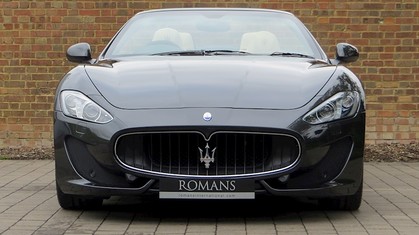Centenary celebrations for Maserati
One of the most famous names in Italy, Maserati is celebrated for offering a range of sports cars, all of which combine the height of elegance and style with noise and performance; whether it’s the Mistral, the Quattroporte or the Barchetta Stradale, the unique styles of the Maserati models is timeless and their appeal hasn’t faltered.
With the brand which bears the famous trident celebrating its centenary this year, we look back at how this modest automotive firm from Bologna grew to be regarded as among the best loved car marques in the world and why it is one of the favourite brands we represent as indpendent Maserati dealers.
Alfieri Maserati founded the company on 1st December 1914, using his own extensive experience and that of his brothers, Bindo and Ernesto, who also worked building Grand Prix cars for Diatto until the manufacturers disbanded in 1929. The firm’s iconic logo was developed by another of the Maserati brothers, Mario, who used the trident of the Fontana del Nettuno monumental fountain in Bologna as his inspiration – an emblem which has changed little to this day.
From racing to road legal
Following the death of Alfieri in 1932, the remaining brothers continued to produce race cars but sold their shared to the Adolfo Orsi family five years later. This led to the relocation of the Maserati firm to Modena in 1940, where it is still based. The Maserati brothers retained engineering roles in the new-look company, helping it to become the only Italian manufacturer to win the Indianapolis 500 consecutively in 1939 and 1940 – the 8CTF model being the victor on both outings.
After enjoying many successes in racing, Maserati then began to switch its focus to road-legal cars and instantly won plaudits for its 3500 model in 1957. The arrival of the Sebring, Mistral and Spider in 1962, ’62 and ’63 respectively helped its reputation grow even stronger, whilst the unveiling of the Quattroporte – also in 1963 – helped to broadcast the badge on the world stage after its appearance at the Turin Motor Show.
Perhaps the most important offering in the era of Orsi ownership, however, was the Ghibli, with its distinctively long bonnet, pop-up headlamps and stunning engine specs helping the model to consistently outsell two of its biggest rivals: the Ferrari Daytona and the Lamborghini Muira.
Citroen, Fiat and Ferrari
Maserati was taken over by Citroen in 1968, a move which saw the firm undergo a great deal of change and led to a range of new models being produced, including the Indy in 1969 and the futuristic Bora in 1971. The Bora was the first mid-engine model ever produced on a mass scale, and, with a top speed of 171mph, is considered to be one of the finest models ever made by the firm.
After being taken over by De Tomaso in 1975, and then Fiat in 1993, the latter sold 50 per cent of its share to Maserati’s arch-rival Ferrari in 1997. This development saw the ‘prancing horse’ transform Maserati into its own luxury brand just two years later, helping to transform models such as the GranTurismo, Spyder and Quattroporte towards the styles that young drivers would recognise today. Ferrari also helped to develop one of the most desired Maseratis of the modern generation: the MC12. Modelled on the Ferrari Enzo, only 50 models were produced for sale and each commanded a sale price of €600,000.
Maserati today
Maserati has always aimed to include style and luxury in their vehicles as standard, with concepts like the striking Bora demonstrating their desire to harness futuristic aesthetics with show stopping power under the bonnet. One model we can look forward to being released this year is the Levante which, after first being unveiled as a concept in 2003 and initially believe to be named the Kubang, will mark the firm’s first ever leap into the SUV market following in the footsteps of many other luxury brands.
The current range consists of the long established GranTurismo and GranCabrio and their many variants while last year saw the launch of the new Quattroporte and also a completely new model sports saloon named the Ghibli.
While it’s been a long journey since the firm began in Bologna a century ago, the principles and values of Maserati continue to be upheld to this day; the company certainly still has much more to offer, and it’s fair to say that we haven’t seen the last of the famous trident.


